Learn how to cook a juicy, tender Denver Steak. Marbled and full of flavor, it's similar to a ribeye but more affordable, perfect for weeknight dinners or weekend grilling.
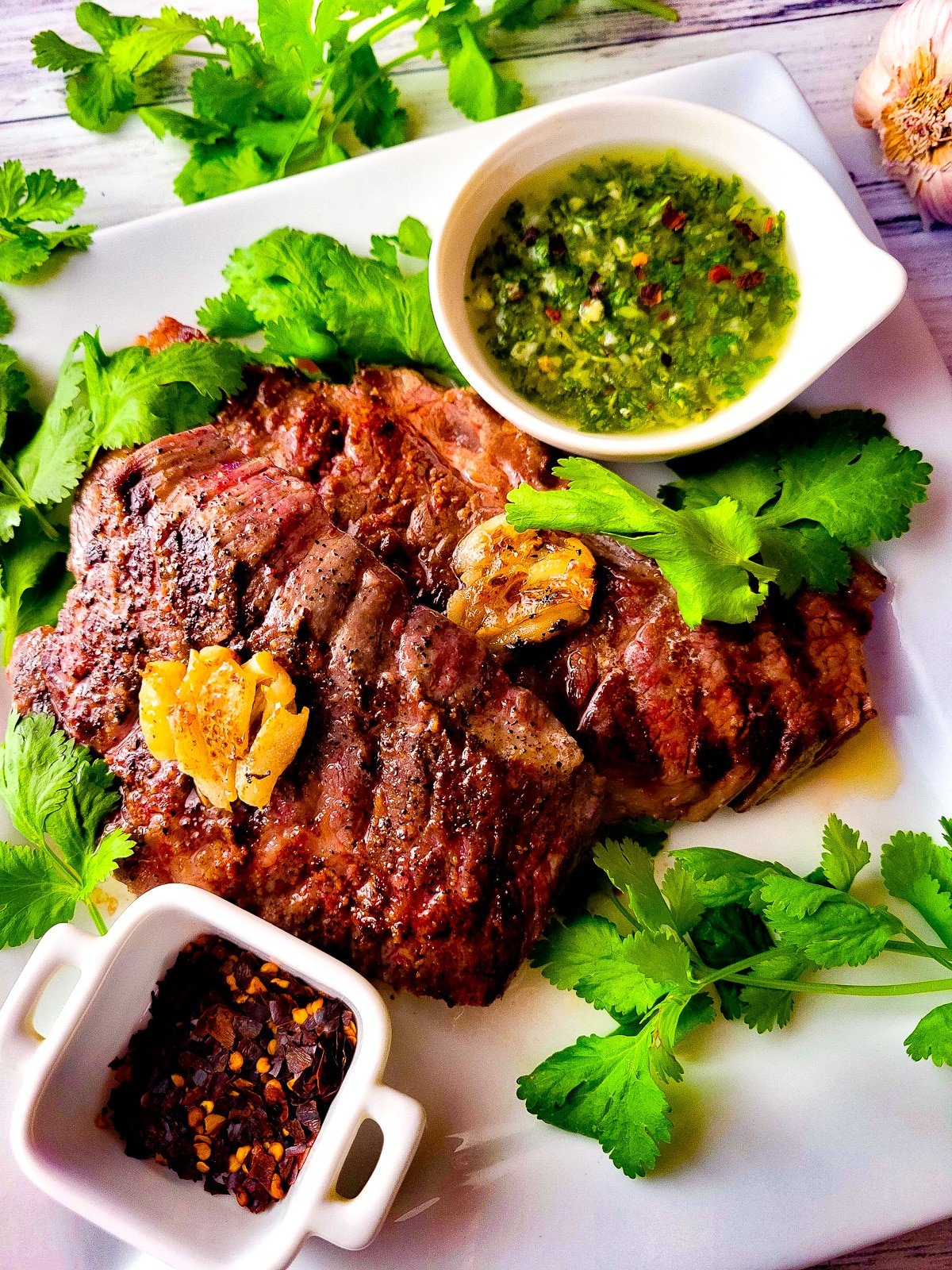
If you've never cooked a Denver steak before, let me tell you, it's one of those cuts that surprises you. It comes from the chuck, yet it's beautifully marbled, tender, and packed with loads of flavor. It has a lot of the same characteristics as a ribeye, just without the higher price tag, which means, you can feed the whole family without blowing the budget.
All you really need is a hot skillet or grill, a good sear, and a few minutes of resting time, and you'll end up with a juicy, flavorful steak that doesn't need much else. I usually pair it with a fresh salad like my ensalada de arroz primavera (spring rice salad) or garlicky cilantro lime rice, yum! It’s also perfect with a vegetarian ceviche like, broccoli ceviche and mushroom ceviche. And honestly, you can never go wrong with a side of comfort food, like macarrones con queso (mac and cheese).
If you're into steaks as much as I am, you'll definitely want to check out my chuletón a la plancha (T-Bone steak) as well.
Jump to:
What is Denver Steak?
Denver steak is still considered a fairly new cut of beef. It comes from the chuck, specifically the under blade section of the shoulder. Unlike most chuck cuts, Denver steak is surprisingly tender. It's beautifully marbled, juicy, and packed with so much rich flavor. To me, it tastes a lot like a ribeye (just without the ribeye price tag). In Spanish, you might also hear it called tablita de lomo, espaldilla, bistec de Denver, corte Denver, or simply corte bajo paleta. As for the name, "Denver steak" doesn't actually have any true connection to the city. The cut was only identified in the early 2000s during a beef industry study, and marketers gave it the Denver name to help it stand out on menus and at butcher shops.
Ingredients
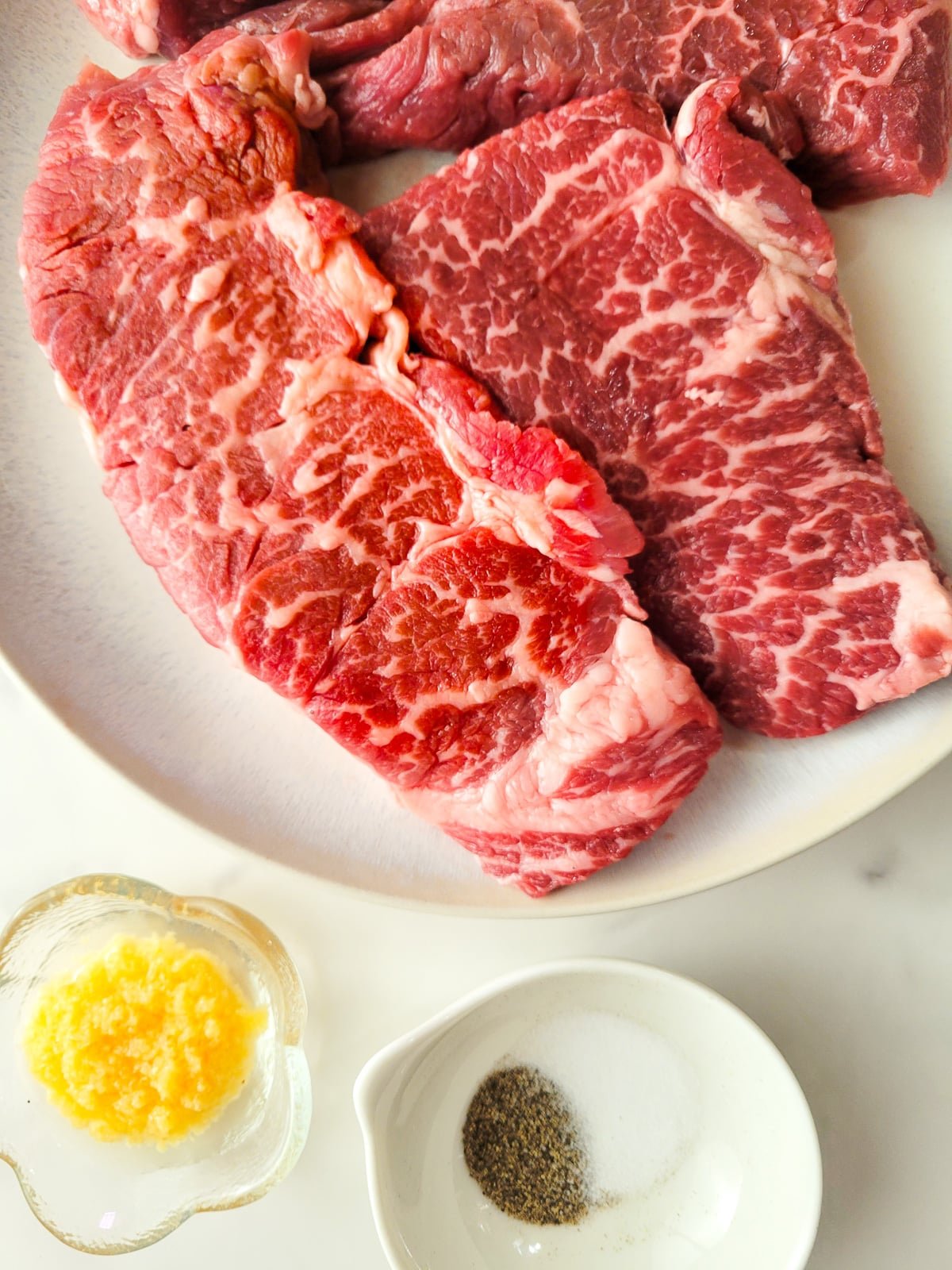
You really don't need much seasoning to bring out the flavor of this steak. The marbling does most of the work for you. I add just a coating of garlic purée, a good sprinkle of salt, and black pepper. That's it. Feel free to add whatever seasonings or marinade you like here but really you don’t need much. I finish mine with a side of chimichurri sauce, which makes every bite even yummier!
See my recipe card below for a complete list of the ingredients with measurements.
How to Cook Denver Steaks
Follow the step-by-step photos below to make this recipe easy to follow. For the full printable recipe instructions and ingredient quantities, scroll to the recipe card at the bottom of this post.

Grilled Denver Steak
Step 1 – Preheat Grill. Preheat your grill to high heat (450-500°F). Lightly oil the grates to prevent sticking.
Season the steaks with the garlic puree ad then season generously with salt, pepper, or your favorite seasoning.
Step 2 – Grill Steaks. Place the steak directly over the heat and grill for about 4-5 minutes per side, depending on thickness and desired doneness.
For thicker cuts, move the steak to indirect heat after searing and cook until it reaches your preferred temperature (125°F rare, 135°F medium-rare, 145°F medium, 150°F Well-done).
Step 3 – Rest Steaks. Remove from the grill, cover loosely with foil, and let them rest for 5-10 minutes before slicing against the grain.
Pan Seared Denver Steak
Step 1 – Season Steaks. Season the steaks with the garlic puree ad then season generously with salt, pepper, or your favorite seasoning.
Step 2 – Heat Pan. Heat a cast iron skillet over medium-high heat until very hot. Add a little canola or vegetable oil to the pan.
Step 3 – Cook Steaks. Place the steak in the skillet and sear without moving it for about 3-4 minutes. Flip and sear the other side for another 3-4 minutes.
Check doneness with a meat thermometer: 125°F rare, 135°F medium-rare, 145°F medium, 150°F well-done.
Step 4 – Rest Steaks. Transfer the steak to a cutting board, tent loosely with foil, and let the steaks rest for 5-10 minutes before slicing against the grain.
Tip: Add a tablespoon or more of butter and whole garlic, and spoon the melted butter over the steak for extra flavor.
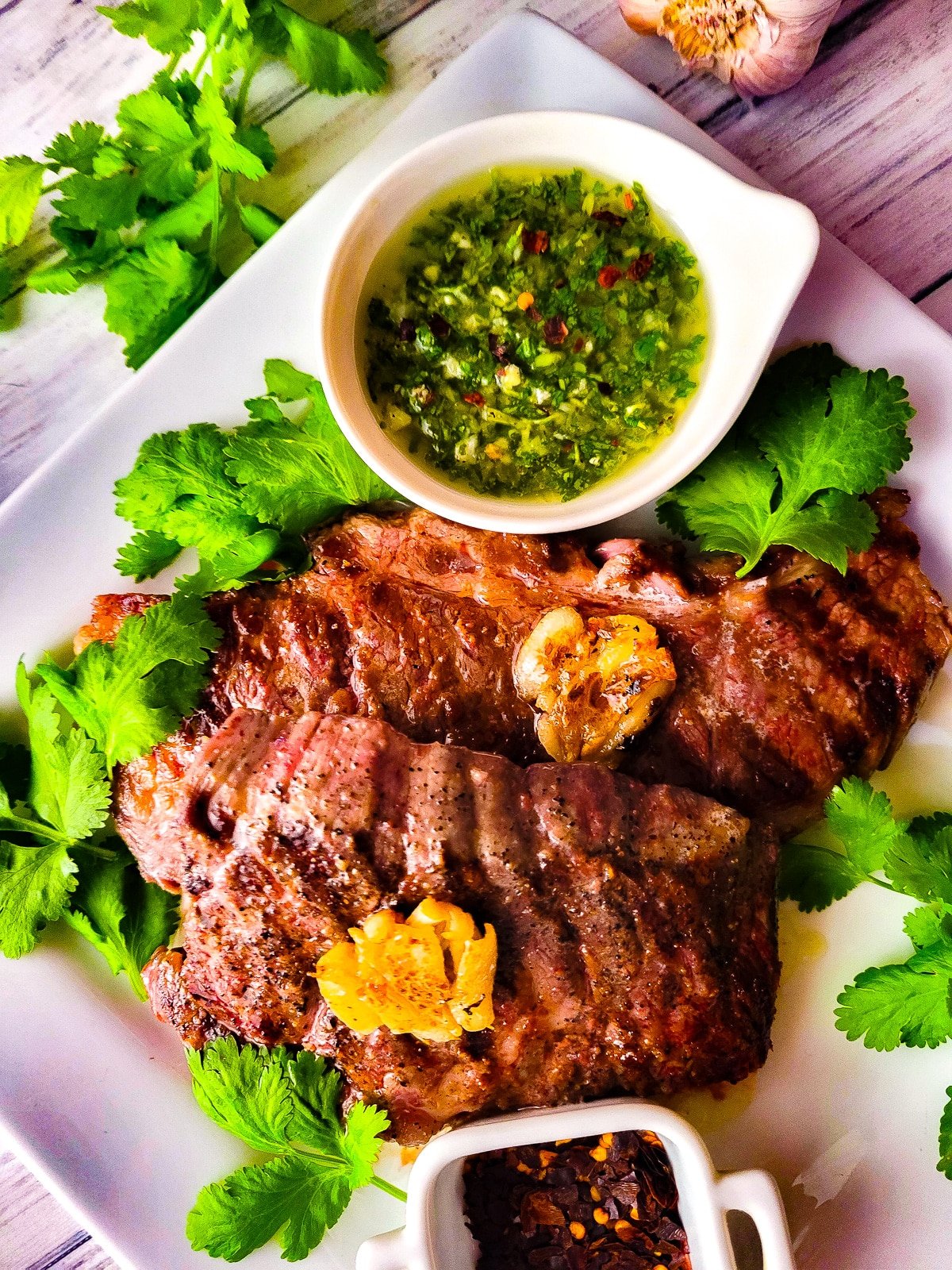
Cathy’s Recipe Tips
- Make sure to rest the steaks: Let your steaks rest for at least 5-10 minutes after cooking so the juices can settle back in. Cutting it too early is the fastest way to dry the steak and lose tons of flavor.
- Use a thermometer: If you can help it, use a thermometer so you can gauge the exact time to remove the steaks off the grill or pan.
- Cook on high heat: Whether you're pan-searing or grilling, make sure your skillet or grill is hot before the steak hits it. That's how you get that gorgeous crust and prevent having dry steaks.
- Seasoning: Keep the seasoning simple, you don’t need much with these steaks, let the steaks shine. Salt, pepper, garlic, and maybe some sauce like chimichurri on the side is really all you need.
Recipe FAQ’s
These steaks are so flavorful you really don’t need more and salt and pepper. When I do use a marinade, I simply let the steaks soak in a blend of soy sauce, garlic puree and black pepper.
Not at all. Even though they come from the chuck (which is usually known for tougher cuts), Denver steaks are actually one of the more tender cuts from that area. Because of all the marbling, they're juicy, flavorful, and not chewy when cooked properly. Just make sure not to overcook them. Medium-rare to medium is where they really shine and are truly perfect.
Luckily, I never have a problem finding Denver steaks in my local grocery store but of course that may not be the case for everyone. If you do not find them in your local supermarket, just ask the supermarket butcher as they usually can cut a few pieces for you.
Other Beef Dishes You Will Love
Did you try this recipe? Please leave a ⭐ review below!
Click any of the images in the post to PIN this Recipe and don't forget to follow along on Pinterest and Facebook.
📖 Recipe
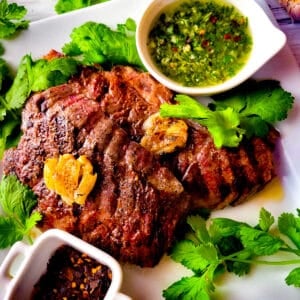
Denver Steak
Equipment
- grill or cast iron pan
Ingredients
- 4 Denver steaks
- 2 tablespoons garlic puree
- salt and pepper to taste
Instructions
Grilled Steaks
- Preheat your grill to high heat (450-500°F). Lightly oil the grates to prevent sticking.
- Season the steaks with the garlic puree ad then season generously with salt, pepper, or your favorite seasoning.
- Place the steak directly over the heat and grill for about 4-5 minutes per side, depending on thickness and desired doneness.
- For thicker cuts, move the steak to indirect heat after searing and cook until it reaches your preferred temperature (125°F rare, 135°F medium-rare, 145°F medium, 150°F Well-done).
- Remove from the grill, cover loosely with foil, and let them rest for 5-10 minutes before slicing against the grain.
Pan Seared Steaks
- Season the steaks with the garlic puree ad then season generously with salt, pepper, or your favorite seasoning.
- Heat a cast iron skillet over medium-high heat until very hot. Add a little canola or vegetable oil to the pan.
- Place the steak in the skillet and sear without moving it for about 3-4 minutes. Flip and sear the other side for another 3-4 minutes.Check doneness with a meat thermometer: 125°F rare, 135°F medium-rare, 145°F medium, 150°F well-done.
- Transfer the steak to a cutting board, tent loosely with foil, and let it rest for 5-10 minutes before slicing against the grain.

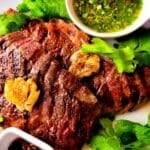

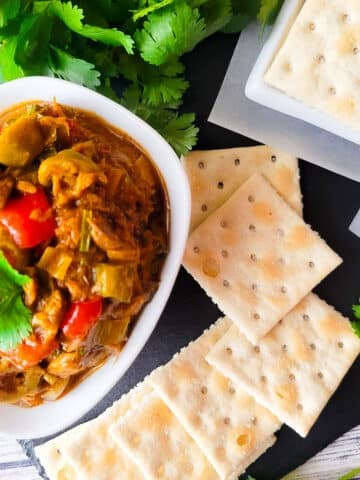



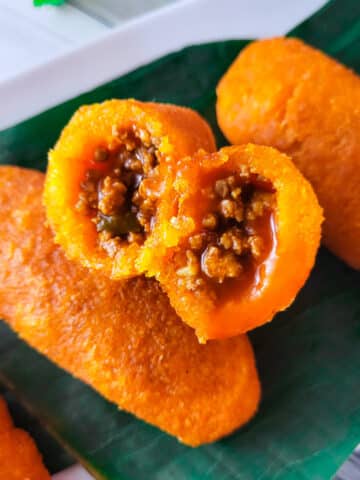
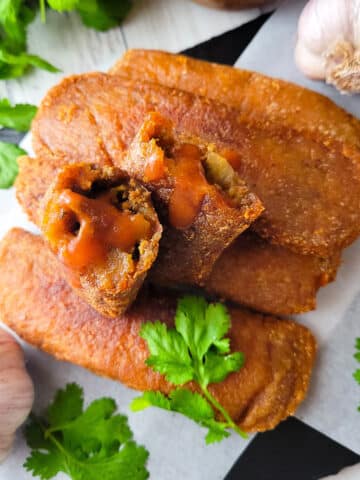
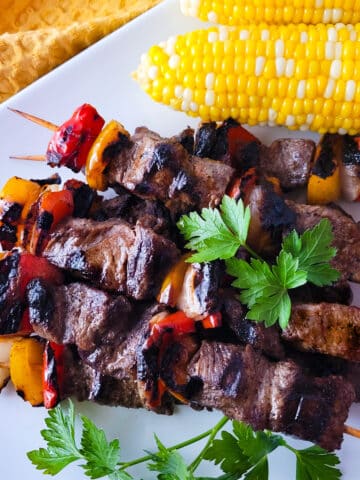

Join the Discussion